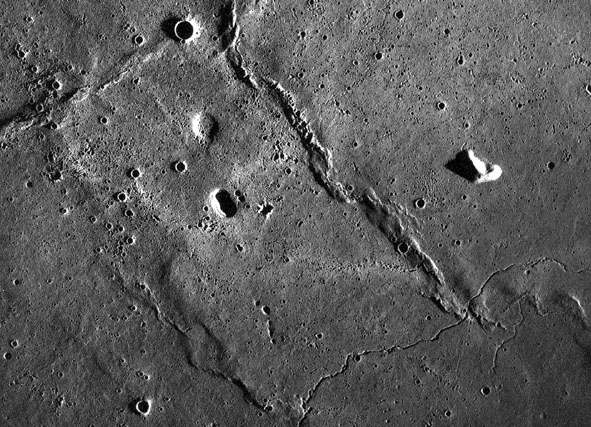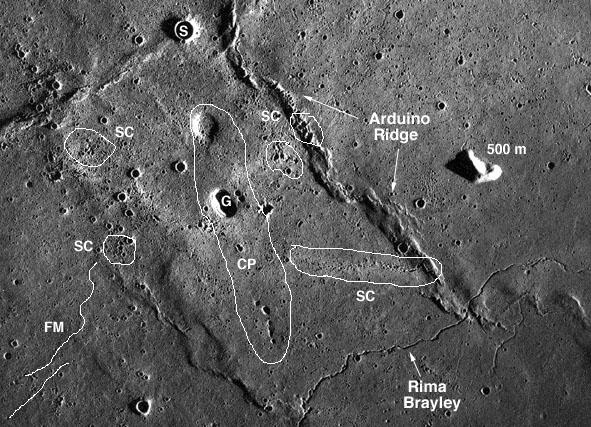July 9, 2015
Magic on the Mare
Originally published July 8, 2004
Image Credit: Apollo 15 Metric Camera Frame 1849 |
|
Magic on the Mare
What a wondrous piece of the Moon! As the Apollo 15 Command Module circled the Moon its Metric Camera took 2240 images of the lunar surface. The very best, like this one near the boundary of Mare Imbrium and Oceanus Procellarum, are works of arts and inspirations for science. This 80 km wide swath of mare - which is just a quarter of the entire frame - is full of interesting features. A mare ridge snakes diagonally across the field. By comparison of the ridge's shadow and that of the 500 m high nearby peak we can guestimate that the ridge is only about 100 m high. Along the bottom right is a section of the Rima Brayley sinuous rille, which is about 250 km long but only about 500 m wide. Technical Details: Related Links: Yesterday's LPOD: Transient TLP Tomorrow's LPOD: On the Mare |
Author & Editor: |
COMMENTS?
Register, Log in, and join in the comments.





